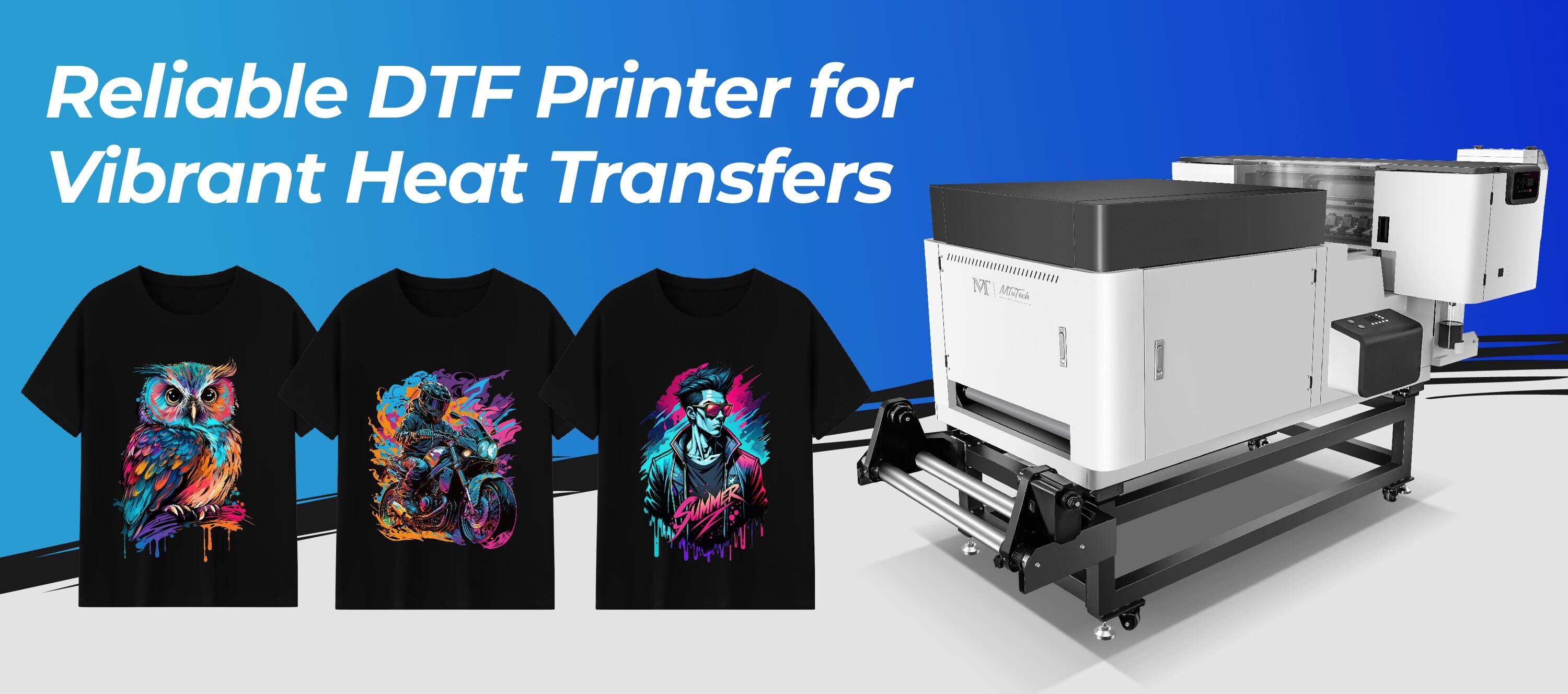 Introduction
Introduction
DTF (Direct-to-Film) printing may sound high-tech, but the process is surprisingly simple — and incredibly powerful. From creating a design on your computer to heat pressing the final transfer onto a t-shirt, every step plays a vital role in the quality and efficiency of your output. This blog walks you through the full DTF workflow so you understand the process like a pro.
Step 1: Create or Import Your Design
- Use design tools like Adobe Illustrator, Photoshop, or Canva
- Save files as PNG, TIFF, or PDF with transparent backgrounds
- Set resolution to 300 DPI for sharp details
Step 2: RIP Software Preparation
- Import your design into RIP software (like AcroRIP or Cadlink)
- Arrange gang sheets if needed
- Add white underbase layer
- Set ink limits, pass count, and resolution based on material
Step 3: Print onto DTF Film
- Use PET film designed for DTF applications
- Make sure print heads are clean before every job
- Ensure proper alignment and ink saturation levels
- First layer: white ink, followed by CMYK color layer
Step 4: Apply Adhesive Powder
- While the ink is still wet, sprinkle TPU hot melt powder evenly
- Shake off excess powder
- Use powder that suits your fabric type (fine or coarse)
Step 5: Cure the Printed Film
- Use a curing oven or heat press (hovering mode) to melt powder
- Typically cure at 160°C for 2–5 minutes until powder turns glossy
Step 6: Heat Transfer to Fabric
- Place the cured film on the garment
- Press at 160–170°C for 10–15 seconds with medium pressure
- Let it cool slightly, then peel cold or warm depending on film type
Step 7: Final Pressing (Optional)
- For added durability and softness, do a second press with parchment or Teflon sheet
Conclusion
DTF printing is fast, flexible, and beginner-friendly once you master the process. With each step optimized, you'll produce vibrant, long-lasting transfers that wow your customers and scale your brand.
Want to streamline every step? Our easy-to-use DTF printer handles every part of the process — from print to peel — with precision.
